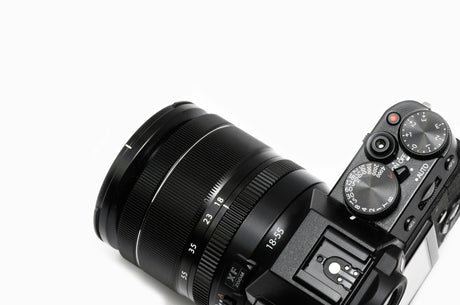Photography has evolved significantly since its inception, and digital cameras have revolutionized the way we capture and share images. In this article, we'll explore what a digital camera is, how it works, its history, its main components, and the different types available on the market.
History of the digital camera
The first digital camera was developed in 1975 by Kodak engineer Steven Sasson. This prototype weighed about 3.6 kg and had a resolution of 0.01 megapixels. Although primitive, it laid the groundwork for modern digital photography. Over the years, technology advanced rapidly, and in 1991, Kodak launched the DCS-100, the first commercial digital camera, aimed primarily at professionals. Over time, digital cameras became more accessible to the general public, transforming the photography industry.
Main components of a digital camera
A digital camera is made up of several essential elements that work together to capture high-quality images:
- Lens: A set of lenses that focus light onto the sensor. The quality of the lens directly influences the sharpness and clarity of the image.
- Image sensor: A device that converts light into electrical signals. The most common sensors are CCD and CMOS, and their size and resolution affect image quality.
- Shutter: Controls the amount of time the sensor is exposed to light. Shutter speed influences motion capture and image exposure.
- Aperture: Adjusts the amount of light entering through the lens. It is measured in f-numbers; a wide aperture (low f-number) allows more light, while a narrow aperture (high f-number) allows less light.
- Image processor: Converts electrical signals from the sensor into a digital image. It is responsible for color processing, noise reduction, and other adjustments.
- LCD Screen/Viewfinder: Allows the photographer to preview and review captured images. Some models include electronic or optical viewfinders.
- Controls and buttons: They facilitate the configuration of parameters such as ISO, white balance, shooting modes, among others.
- Battery: Provides the power needed for the camera to operate.
- Storage: Digital cameras use memory cards (such as SD, CF, or microSD) to store captured images and videos.
Types of digital cameras
There are several types of digital cameras, each designed to meet different needs and experience levels:
Compact cameras
Also known as "point and shoot," they are small, lightweight, and easy to use. Ideal for beginners or those looking for a portable camera for casual shooting. They generally have fixed lenses and offer automatic controls.
Bridge cameras
A bridge between compact cameras and SLRs. They offer a more powerful zoom and greater manual control than compact cameras, but don't have interchangeable lenses. They're suitable for amateurs who want more versatility without the complexity of an SLR.
Digital SLR cameras (DSLR)
They use a mirror system to direct light to the optical viewfinder. They offer interchangeable lenses, larger sensors, and greater control over settings. They are popular with professional photographers and advanced enthusiasts.
Mirrorless cameras
They lack the mirror system found in DSLRs, making them more compact. Despite their smaller size, they offer interchangeable lenses and image quality comparable to SLRs. They use electronic viewfinders or rely exclusively on the LCD screen to compose the image.
Medium format cameras
Equipped with larger sensors than standard DSLRs and mirrorless cameras, they offer superior image quality, ideal for high-resolution commercial, fashion, and landscape photography. They are more expensive and bulkier.
Action cameras
Designed to be rugged and compact, they're ideal for capturing sports and outdoor activities. They're known for their durability and ability to capture high-definition video from unique perspectives.
How does a digital camera work?
The capture process on a digital camera involves several steps:
- Light enters through the lens and passes through the diaphragm, which regulates the amount of light.
- The shutter opens for a set amount of time, allowing light to reach the sensor.
- The sensor converts light into electrical signals, which are processed by the image processor to generate a digital image.
- The image is displayed on the LCD screen and stored on the memory card.
Conclusion
Digital cameras have transformed the way we capture and share moments. Understanding their history, components, and types will allow you to make informed decisions.





















